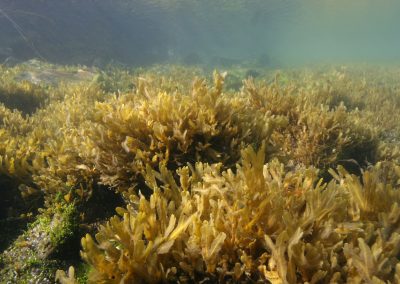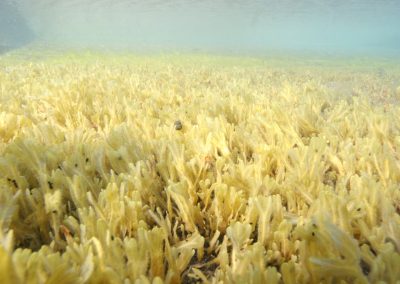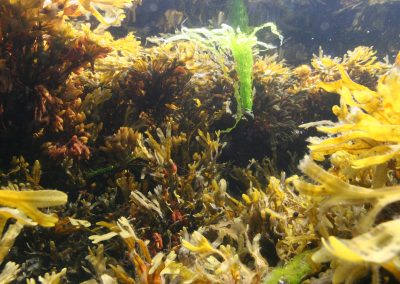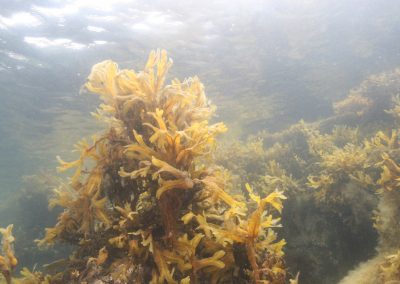Bladder wrack
Fucus vesiculosus
Benthic algae are characteristic on stony and rocky shores where there is not too much surf. However, if the substrate is fine, or the wave action to high, the algae will not be able to attach to the bottom. However, the species differ in how they tolerate this.
Brown algae of the genus Fucus are the most common alga in the seashore. This is what we often call rockweeds. Of these, the spiral wrach (Fucus spiralis) dominates the upper shore, although numerous other and smaller species are found there as well. Below this the bladder wrack and the rockweed (Ascophyllum nodosum) are most common and and below that the shore the two-headed wrack (Fucus distichus) prevails. The species also have a different tolerance for wave activity. The bladder wrack is usually found where there is small wave activity.
The bladder wrack has a broad and thin central stem that divides into many smaller leaves. It has air-filled bubbles at the ends of the leaves like other Fucus species, but also has a few pairs of circular air-filled bubbles at the bottom of the central blades. It can be distinguished from other species by these bubbles.
Bladder wrack is found throughout the North Atlantic and on the seashore all around Iceland.
The bladder wrack can be eaten. There is a lot of iodine in it, and it was important in earlier times to prevent iodine deficiency that many suffered from.
HÞV








